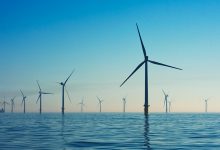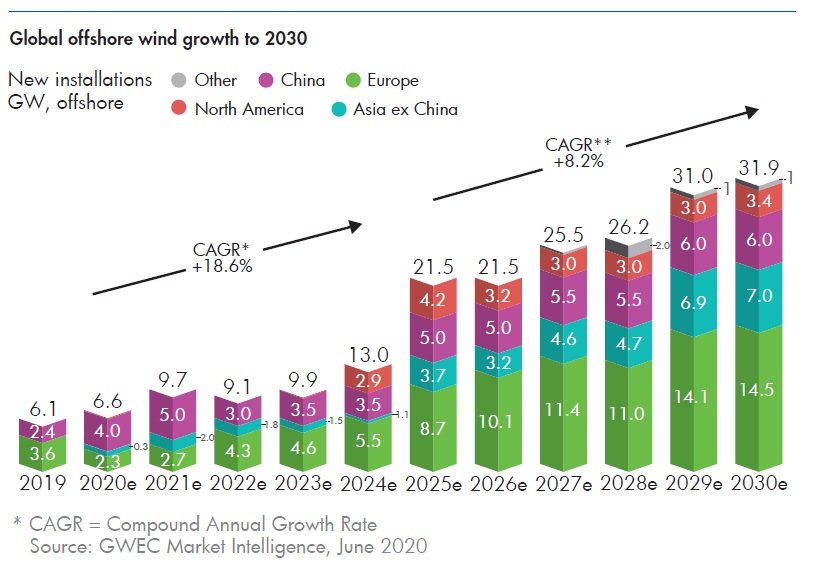As part of the Biden administration’s plan to hit 100% clean energy by 2035, a plan to expand the construction of offshore wind farms has been announced. 30 gigawatts of offshore wind capacity along America’s east coast is targeted in the plan, to be built by 2030.
A key focus for the administration is protecting biodiversity, promoting ocean co-use and creating a large number of union jobs.
“It will generate enough power to meet the demand of more than 10 million American homes for a year, and avoid 78 million metric tons of CO2 emissions”, said the Biden administration.
We're joining a government-wide effort to advance offshore wind and increase renewable energy development on federal lands and waters. Learn more: https://t.co/x0uggfVylt pic.twitter.com/WHA0qhFQQi
— US Department of the Interior (@Interior) March 29, 2021
It comes as the US also announces plans to slash the costs of solar by another 60 per cent by 2030, recognising it as a key part of its plan for zero emissions from the grid by around 2035.
And it comes as Biden invites 40 world leaders, including Australia’s Scott Morrison, for a “climate summit” in April when Biden will unveil an enhanced emissions reduction target, and will expect his invitees to do the same.
“We are ready to rock-and-roll,” national climate adviser Gina McCarthy told US reporters in a phone call Monday, reported the Washington Post. McCarthy added that offshore wind would create “thousands of good-paying union jobs. This is all about creating great jobs in the ocean and in our port cities and in our heartland.”
Big offshore wind news today. Biden Administration announces
– New lease area in NY Bight,
– Offshore wind target of 30GW by 2030
– $3 billion in DOE loans
– $230 million for port upgrades
– NOAA studies on marine impact
– Ocean Wind NOI, a 1.1GW project off NJ— Ben Storrow (@bstorrow) March 29, 2021
“This offshore wind goal is proof of our commitment to using American ingenuity and might to invest in our nation, advance our own energy security, and combat the climate crisis,” said Secretary of Energy Jennifer M. Granholm.
“DOE is going to marshal every resource we have to get as many American companies, using as many sheets of American steel, employing as many American workers as possible in offshore wind energy – driving economic growth from coast to coast.”
American offshore wind power has seen underwhelming growth at best over the past decades, with only one operational offshore project in America, near Rhode Island. However the potential for growth in the US is significant, with the International Energy Agency reporting in 2019 that the technical potential output of offshore wind was around 8,000 terawatt hours, roughly twice the country’s total electricity demand.
Offshore wind is highly unique, in that it is technically variable but significantly more consistent in output than onshore wind and solar, though it remains more expensive than both.
“New offshore wind projects have capacity factors of 40%-50%, as larger turbines and other technology improvements are helping to make the most of available wind resources”, said the International Energy Agency.
“At these levels, offshore wind matches the capacity factors of efficient gas-fired power plants, coal-fired power plants in some regions, exceeds those of onshore wind and is about double those of solar PV”.
The Global Wind Energy Coalition (GWEC) predicts that offshore wind power in North America will become a substantial proportion of total global growth, with most occurring in Europe.
“In total, 23 gigawatts of offshore wind is predicted to be built in this region in this decade, of which less than 1 GW is expected to come from Canada”.
This means Biden’s plan is a significant increase on the expected rate of offshore wind growth in the US. The Biden plan directly addressed the permitting processes that GWEC claims are delaying the growth of the industry in the US.
“As of the end of 2019, BOEM (Bureau of Ocean Energy Management) has auctioned 16 active commercial leases for offshore wind development that could support more than 21 GW of generating capacity”, writes GWEC. State-based offshore wind targets are the key drivers behind this goal, though most of these target 2035 rather than Biden’s 2030 offshore wind target.












